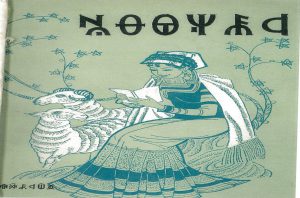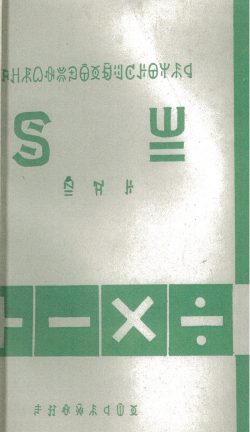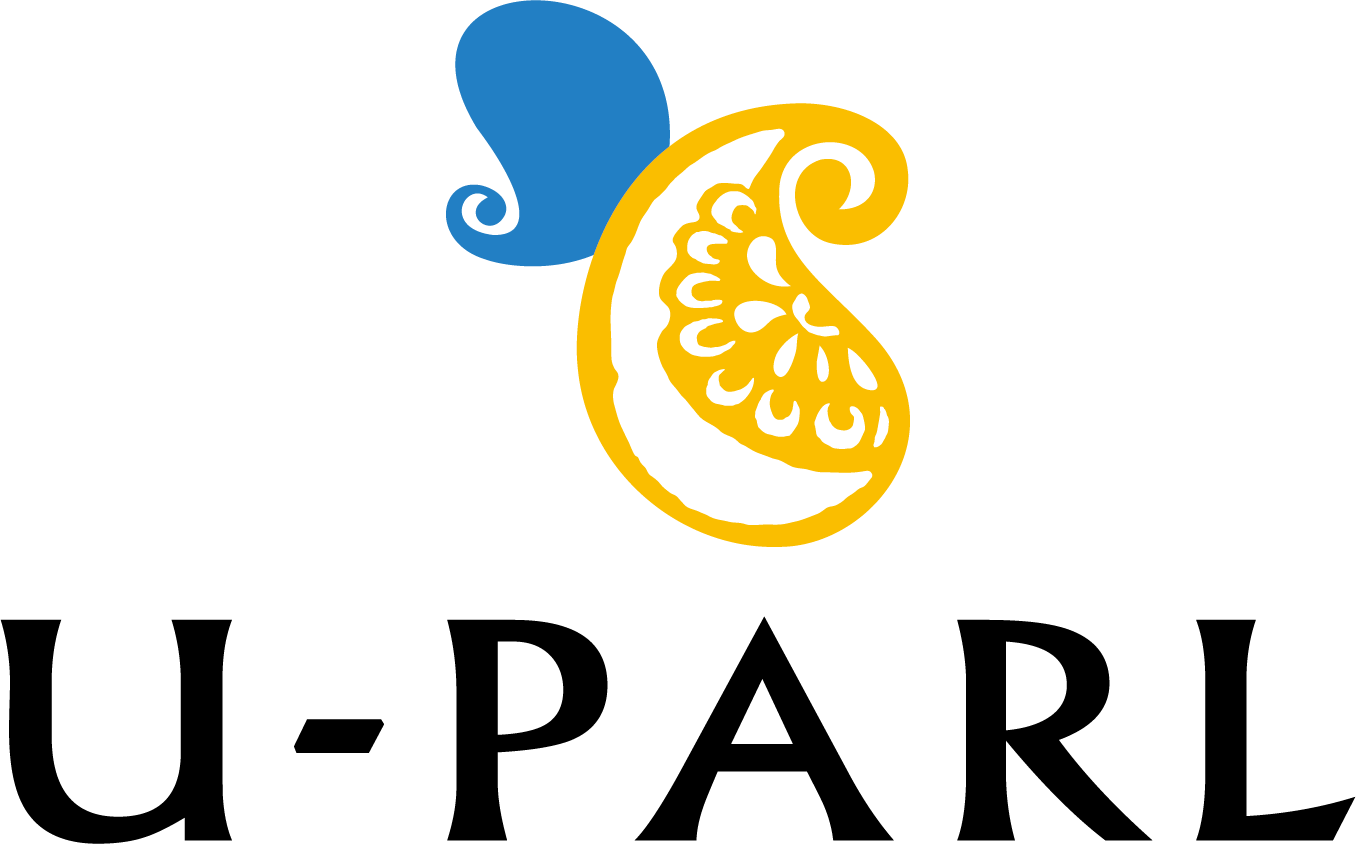
Kazue IWASA
Researcher, Japan Society for the Promotion of Science, Researcher of the Yi Language
*Kazue IWASA, is one of the few people in the world doing research on the Yi language. She has contributed to the cataloguing of the Yi language materials from among the U-PARL collection “Literacy Education Materials Donated by ACCU.” Here, she explains for us the linguistic characteristics and societal circumstances of the Yi language and shares the knowledge she has gleaned from surveying the materials herself. We are very grateful for her contribution of this commentary. An overview of the materials on literacy education donated by ACCU can be seen here.
The following texts are all written the in the minority language of “Yi” (followed in brackets by their simplified Chinese titles and the English meanings of the latter): “ꁱꂷꌷꅍꄯꒉ” (“彝文识字课本”; “Yi Script Literacy Textbook”), “ꌷꅍꄯꒉ” (“农村实用课本”; “Practical Rural Village Textbook”), “ꇮꃅꂿꑘꊿꇢꎙꌶꅉꀁꂥꊐꌠꌷꅍꄯꒉ ꌗꁈ ꊁꋐꌠ” (“工农业余算术课本”; “Arithmetic Textbook for Laborers’ and Farmers’ Leisure Time”).
Yi belongs to the same family of languages as Tibetan and Burmese, in the branch of Lolo-Burmese languages, and is spoken in China in the Sichuan, Yunnan, and Guizhou provinces and the Guangxi Zhuang Autonomous Region; in northern parts of Vietnam; and in northeastern parts of Laos. The Yi that is used in China is classified into the six dialects of the different areas of north, south, east, southeast, west, and central. The four dialects other than those of the west and central areas each have their own written character systems and many forms of literature written in those corresponding systems.
Incidentally, spoken in Vietnam are the two dialects of “Flower Lolo” (Lô Lô Hoa) and “Black Lolo” (Lô Lô Ðen), and in Laos the dialect of Lolopho, but as of now there are no reports of either of them using a character script or of producing literature.
The population of the Yi people is, according to a national census conducted in China in 2010, reported as being approximately 8,710,000. As noted above, the Yi people of China live throughout the expansive southwest area of China, so the climate and social environment in each region is varied, with groups residing in the comparatively harsh natural environments of mountain districts and groups living on warm climate plains that are rich in nature. Again, social systems also differ in each area, and, for example, it is widely known that slavery formerly existed in one part of the Yi people’s society (Sichuan, etc.) before the 1949 Chinese Revolution.
The Yi people of Vietnam (locally called the Lolo people = người Lô Lô) reside mainly in the northern part of Vietnam near the Chinese border, and according to the 2009 national census, the population then was 4,541. In 2001–2002 when I visited the Cao Bang province to survey the Black Lolo dialect, the Yi people of that area were leading mostly self-sufficient lives in the mountain villages far removed from the provincial capital. Their circumstances meant they did not receive sufficient elementary education; and, it goes without saying in regard to the Vietnamese language, but they also barely understood the variety of Thai that was used as a lingua franca in that area. However, at present, with elementary education having been implemented in Vietnamese, and with local neighboring villages apparently having been thoroughly converted into tourist areas with a focus on their expansive terraced rice field landscapes, it is not hard to image that the language and social environments that surround them must have changed at a dizzying pace in the space of a few years.
The Yi people of Laos reside in the northern part of the country, and according to 2005 population statistics, their population stood at 1,691. The majority live in the Phongsaly province, but apparently a group of them had relocated to the Luang Namtha province in 2003.[1]
Compared to research on the Chinese Yi people and their language, there is still little such reporting or research for Vietnam and Laos, and it would be great to see new surveys in the future. On the other hand, while much research has been done on the Yi people and language of China, there are still dialects that have not been surveyed, and we await further ongoing reporting and research. As concerns research into Yi literature, which has not extended beyond Chinese language translations, big issues for future research include explaining historical changes in and the progression of the Yi script and conducting linguistic investigations into examples of written Yi language.
Let us now take a look at the “Yi Script Literacy Textbook” (“彝文识字课本”), the “Practical Rural Village Textbook” (“农村实用课本”), and the “Arithmetic Textbook for Laborers’ and Farmers’ Leisure Time” (“工农业余算术课本”).
These three texts are all written in the northern area Yi dialect that is used throughout the regions surrounding the Daliang mountains of Sichuan in China, and the characters used in the titles are from the 819 total in the phonetic syllabary referred to as the “Liangshan Standard Yi Script.”
In Sichuan’s Liangshan prefecture, a project to organize and propagate the popular use of the traditional Yi script has been ongoing since the 1970s, and this standard Yi script was officially established, received governmental ratification, and began to be used in the publication of textbooks, literature, and the newspaper Liangshan Ribao (lit. “Liangshan Daily News”).
Whether one looks from the perspective of the transmission and preservation of the Yi script and literature, or whether one looks from the perspective of maintaining mother-tongue language ability and preserving cultural identity, this initiative in Sichuan is extremely interesting. For the younger demographic that tends to gravitate toward the use of the Chinese language, people in this region have put effort into preserving the native tongue through initiatives such as the use of standard Yi script texts beginning in elementary education. However, when one looks at these three texts, “Yi Script Literacy Textbook,” “Practical Rural Village Textbook,” and “Arithmetic Textbook for Laborers’ and Farmers’ Leisure Time,” one can see that these initiatives have not merely been limited to compulsory education and also target a wider demographic in terms of age group. That is to say, when it comes to the Yi people as a whole in this region, one can certainly sense the strong resolve of the Liangshan education agency in proactively striving to popularize the Yi script.
Further, although the Yi language in these texts is indeed written language, because the texts are used by native speakers of the northern dialect of contemporary Yi, one can expect the texts to vibrantly reflect the peculiarities of the contemporary Yi northern dialect used daily by native speakers. And, in that regard, one can say that these texts are all the more valuable as language materials in helping us learn about the contemporary living Yi language. Thus, the language data that can be obtained will be extremely significant in terms of its potential use in sociolinguistics as well as in general linguistics studies.
So, what was the purpose of compiling these three texts?
As I mentioned earlier, we can be confident in saying that the texts were compiled for the purpose of having a wider range of ages learn the Yi script and to have individuals acquire the basic knowledge and learning skills needed for everyday life and work using their mother tongue language.
Below I give a basic outline of each of the texts.

“ꁱꂷꌷꅍꄯꒉ” (“彝文识字课本”) literally means “Yi Script Literacy Textbook,” and just as the title suggests it is a textbook designed to help in the study of the character script of the Yi language.
The content of the text is arranged to allow for a step-by-step progression in learning the script, beginning with an explanation of character strokes/radicals, and going onto examples and readings for characters and numerals and expressions for people’s names and terms of address, before moving onto short reading passages. In the text, one sees phrases such as “literacy is an important weapon” (section 6), extolling the importance of studying and learning the Yi script.

As for the second text, “ꌷꅍꄯꒉ,” when its Yi title is directly translated it means “Book [for] Learning,” but its Chinese title is “农村实用课本” (“Practical Rural Village Textbook). The text is intended for studying the information necessary for work in agriculture and life in a rural village after having first studied the Yi script.
After studying characters and numerals in the first to fourth sections, students learn vocabulary for “body parts,” “directions,” and “weights and measures.” After that and a middle section explaining Yi character strokes/radicals and stroke order, etc., students learn about characters related to natural phenomena, livestock, and time. They then go on to acquire knowledge indispensable for life in a rural village, such as vocabulary related to agriculture, irrigation channels, and transportation. The second half of the text deals with things like writing sales receipts and making basic calculations, also introducing songs, making the text very broad in content.

As for “ꇮꃅꂿꑘꊿꇢꎙꌶꅉꀁꂥꊐꌠꌷꅍꄯꒉ ꌗꁈ ꊁꋐꌠ” (“工农业余算术课本”) (“Arithmetic Textbook for Laborers’ and Farmers’ Leisure Time”), the Chinese title makes no mention of the level it targets but the Yi title translates to the following: “Textbook for Leisure Time Classes in Arithmetic for Laborers and Farmers: Beginner Level [ꀁꂥꊐꌠ] (Last Volume).” From this, one can see that the content is targeted at a beginner level. “Leisure Time Classes” refers to adult education that makes use of downtime outside of working hours.
Because this text is the last volume in the series, it starts from chapter four, “Fractions,” and continues on to chapter five, “Percentages,” and chapter six, “Proportions,” and example answers for the practice questions are included at the end.
Traditionally, the Yi script and the literature written using it was the domain of successive generations of priests, originally referred to as “bi-mox,” who passed it down among themselves. Regular people were not able to read or write Yi.
The content of that literature covered many topics such as scripture, legend, history, medicine, and astrology, and inscriptions range from those written on paper to those inscribed on various other mediums such as cloth, bamboo strips, wood strips, animal bones and horns, and rocks.
There are various theories on how the Yi script came about, but the oldest examples of the script, among those that can be reliably dated, are the “Chenghua Bell Inscriptions” on a bell that was cast in the 15th century in the Dading county of Guizhou province.[2] On the other hand, among the extant literature, the majority of that written on paper is estimated to have been created somewhere between the end of the 19th and the beginning of the 20th century.
As opposed to the Liangshan standard Yi script which came to be an entirely phonetic syllabary, the majority of Yi characters in classical literature used by bi-mox were ideographs—with many characters having alternate forms. And, despite the ongoing phenomenon of character borrowing occurring in each region, there are still a total number of 8,000–10,000 characters depending on the region (and even more in some parts).
Moreover, between different spoken dialects of Yi, there are big differences when it comes to phonemes and vocabulary, and communication can be difficult, but the same is the case when it comes to written characters, too. This means it is no simple task to understand different dialects’ scripts and literature due to differences in character shapes and phonetic values.
Under these circumstances, today, in the Yunnan and Guizhou provinces, too, the establishment of their own “standard Yi script” is progressing based on the traditional Yi scripts of those areas, and texts, etc. intended to help spread the Yi script are being published. Again, in parallel to this, there are also attempts to make use of the aforementioned Liangshan standard Yi script established based on the northern dialect in representing other dialects of Yi in written characters. However, because of the large differences between dialects, as mentioned above, circumstances mean that even today it would be difficult to establish a universal system of notation used across multiple individual dialects as is the case with Chinese characters.
Presently, no matter the region where Yi people live, the Yi language is always being influenced by languages that have a social or economic advantage and it is under constant threat of becoming extinct. The fall in Yi language ability among the younger demographic is particularly striking. Further, in the same way that modern dialects are under threat, with the issue of aging among bi-mox and a lack of successors, the transmission of the script and its literature are also at risk. Today, there is even more need for swift preservation, organization, and research of the script and the literature, and I truly pray that the existence of texts such as the three above will aid in breaking out of the current situation.
[1] Information about the Yi people of Laos is taken from pp. 171–205 of Hayashi (2015) “Lolo-po-go onron no yobiteki kenkyū” (lit. “Preliminary Research into Lolopho Language Phonologic Theory”), Chikyūken gengo kijutsu ronshū 7, edited by Masayuki Ōnishi, Shuntaro Chida, and Yuma Itō. Gengo Kijutsu Kenkyūkai. Sōgo Chiiki Kankyōgaku Kenkyūjo. Project: “Ajia/taiheiyō ni okeru seibutsu bunka tayōsei no kenkyū” (project leader: Masayuki Ōnishi). It goes without saying, however, that I am personally responsible for any inaccuracies in the present commentary.
[2] Shimuzu, Tōru (2014). “Kindai kara gendai ni okeru Izoku shakai no henka to bunka henyō ni okeru sōgōteki kenkyū: Ryōzan Izoku o chūshin to shite” (lit. “Comprehensive Research on Social Change and Acculturation of the Yi People from the Modern Period until Today”) (doctoral dissertation). See p. 3.

